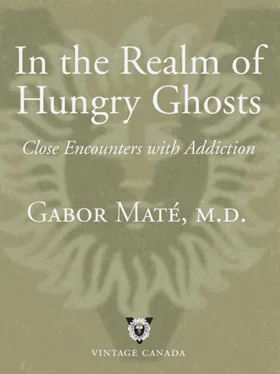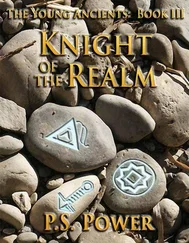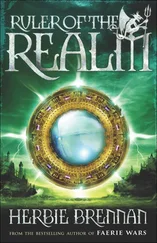“The high rates of narcotic use and addiction there were truly unlike anything prior in the American experience,” the researchers concluded. “Equally dramatic was the surprisingly high remission rate after return to the United States.” 5These results suggested that the addiction did not arise from the heroin itself but from the needs of the men who used the drug. Otherwise, most of them would have remained addicts.
As with opiates so, too, with the other commonly abused drugs. Most people who try them, even repeatedly, will not become addicted. *13According to a U.S. national survey, the highest rate of dependence after any use is for tobacco: 32 per cent of people who used nicotine even once went on to long-term habitual use. For alcohol, marijuana and cocaine the rate is about 15 per cent and for heroin the rate is 23 per cent. 6Taken together, American and Canadian population surveys indicate that merely having used cocaine a number of times is associated with an addiction risk of less than 10 per cent. 7This doesn’t prove, of course, that nicotine is “more” addictive than, say, cocaine. We cannot know, since tobacco—unlike cocaine—is legally available, commercially promoted and remains, more or less, a socially tolerated object of addiction. What such statistics do show is that whatever a drug’s physical effects and powers, they cannot be the sole cause of addiction.

For all that, there is a factual basis to the durable notion of certain drugs being inexorably addictive: some people, a relatively small minority, are at grave risk for addiction if exposed to certain substances. For this minority, exposure to drugs really will trigger addiction, and the trajectory of drug dependence, once begun, is extremely difficult to stop.
In the United States opiate relapse rates of 80 per cent to more than 90 per cent have been recorded among addicts who try to quit their habit. Even after hospital treatment the re-addiction rates are over 70 per cent. 8Such dismal results have led to the impression that opiates themselves hold the power of addiction over human beings. Similarly, cocaine has been described in the media as “the most addictive drug on earth,” causing “instant addiction.” More recently, crystal methamphetamine (crystal meth) has gained a reputation as the most instantly powerful addiction-inducing drug—a well-deserved notoriety, so long as we keep in mind that the vast majority of people who use it do not become addicted. Statistics Canada reported in 2005, for example, that 4.6 per cent of Canadians have tried crystal meth, but only 0.5 per cent had used it in the past year. 9If the drug by itself induced addiction, the two figures would have been nearly identical.
In one sense certain substances, like narcotics and stimulants, alcohol, nicotine and marijuana, can be said to be addictive, and it’s in that sense that I use the term. These are the drugs for which animals and humans will develop craving and which they will seek compulsively. But this is far from saying that the addiction is caused directly by access to the drug. We will later explore why these substances have addictive potential; the reasons are deeply rooted in the neurobiology and psychology of emotions.
Because almost all laboratory animals can be induced into compulsive self-administration of alcohol, stimulants, narcotics and other substances, research has appeared to reinforce the view that mere exposure to drugs will lead indiscriminately to drug addiction. The problem with this apparently reasonable assumption is that animal laboratory studies can prove no such thing. The experience of caged animals does not accurately represent the lives of free creatures, including human beings. There is much to be learned from animal studies, but only if we take into account the real circumstances. And, I should add, only if we accept the tremendous suffering imposed on these involuntary “subjects.”
Although there are anecdotes of animals in the wild becoming intoxicated, most of them are spurious, as is the case, for example, with stories of elephants getting “drunk” on fermenting marula fruit. There are no known examples of persistently addictive behaviours in the natural world. Of course, we cannot predict exactly what might happen if wild animals had free and easy access to addictive substances in the purified and potent forms administered in laboratories. What has been shown, however, is that conditions in the laboratory powerfully influence which animals will succumb to addiction. Among monkeys, for example, subordinate males who are stressed and relatively isolated are the ones more likely to self-administer cocaine. As I will later explain, being dominant leads to brain changes that give stronger monkeys some protection from an addictive response to cocaine. 10
Bruce Alexander, a psychologist at Simon Fraser University in British Columbia, points out the obvious: laboratory animals in particular can be induced into addiction because they live under unnatural circumstances of captivity and stress. Along with other astute researchers, Dr. Alexander has argued that drug self-administration by these creatures may be how the animals “cope with the stress of social and sensory isolation.” The animals may also be more prone to give themselves drugs because they are cooped up with the self-administration apparatus and cannot move freely. 11As we will see, emotional isolation, powerlessness and stress are exactly the conditions that promote the neurobiology of addiction in human beings, as well. Dr. Alexander has conducted elegant experiments to show that even lab rats, given reasonably normal living situations, will resist the addictive appeal of drugs:
My colleagues and I built the most natural environment for rats that we could contrive in the laboratory. “Rat Park,” as it came to be called, was airy, spacious, with about 200 times the square footage of a standard laboratory cage. It was also scenic (with a peaceful British Columbia forest painted on the plywood walls), comfortable (with empty tins, wood scraps, and other desiderata strewn about on the floor), and sociable (with 16–20 rats of both sexes in residence at once).
…We built a short tunnel opening into Rat Park that was just large enough to accommodate one rat at a time. At the far end of the tunnel, the rats could release a fluid from either of two drop dispensers. One dispenser contained a morphine solution and the other an inert solution.
It turned out that for the Rat Park animals, morphine held little attraction, even when it was dissolved in a sickeningly sweet liquid usually irresistible to rodents and even after these rats were forced to consume morphine for weeks, to the point that they would develop distressing physical withdrawal symptoms if they didn’t use it. In other words, in this “natural” environment a rat will stay away from the drug if given a choice in the matter—even if it’s already physically dependent on the narcotic. “Nothing that we tried,” reported Bruce Alexander, “instilled a strong appetite for morphine or produced anything that looked like addiction in rats that were housed in a reasonably normal environment.” By contrast, caged rats consumed up to twenty times more morphine than their relatively free living relatives.
Dr. Alexander first published these findings in 1981. 12In 1980 it had already been reported that social isolation increased animals’ intake of morphine. 13Other scientists have since confirmed that some environmental conditions are likely to induce animals to use drugs; given different conditions, even captive creatures can resist the lure of addiction.
The Vietnam veterans study pointed to a similar conclusion: under certain conditions of stress many people can be made susceptible to addiction, but if circumstances change for the better, the addictive drive will abate. About half of all the American soldiers in Vietnam who began to use heroin developed addiction to the drug. Once the stress of military service in a brutal and dangerous war ended, so, in the vast majority of cases, did the addiction. The ones who persisted in heroin addiction back home were, for the most part, those with histories of unstable childhoods and previous drug use problems. 14
Читать дальше













